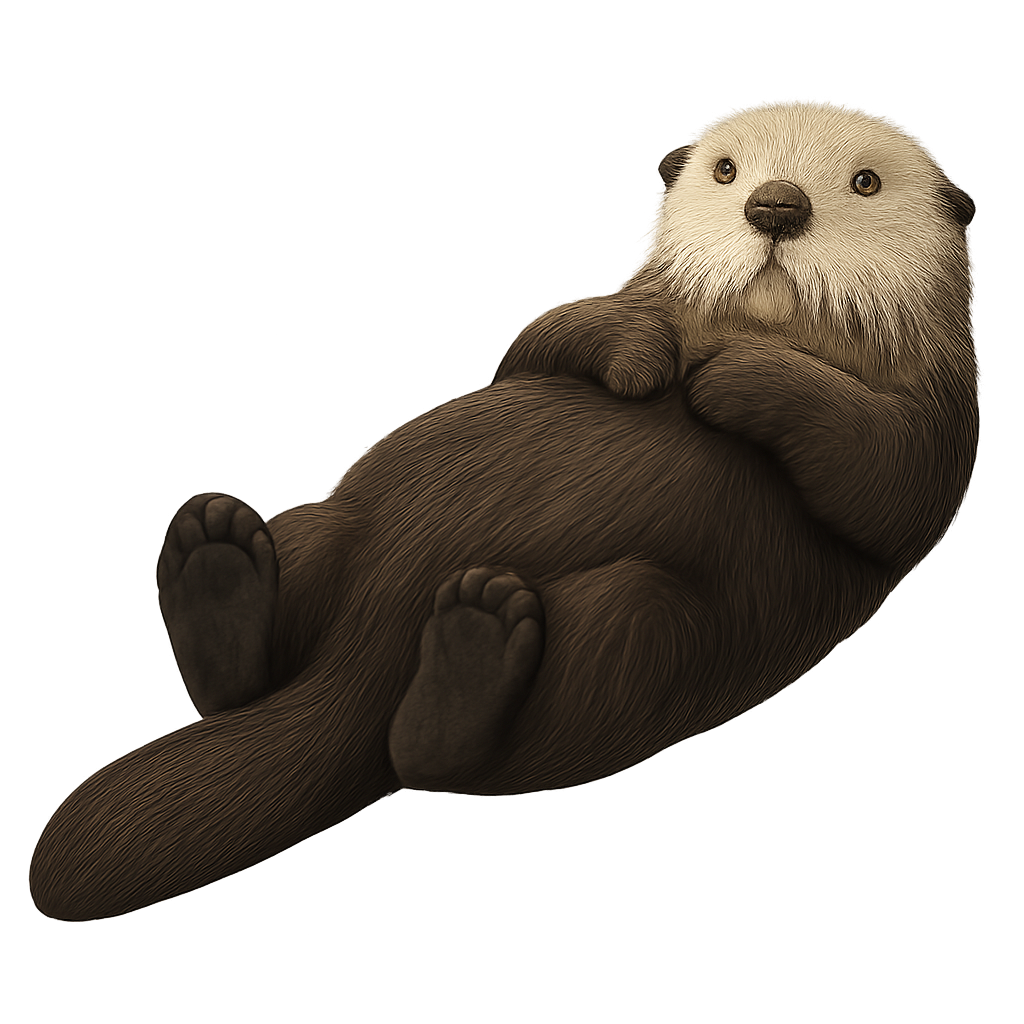Your wildlife photography guide.
Explore the sea otter in detail, study its behavior, prepare your shots.
Where to observe and photograph the sea otter in the wild
Learn where and when to spot the sea otter in the wild, how to identify the species based on distinctive features, and what natural environments it inhabits. The WildlifePhotographer app offers tailored photography tips that reflect the sea otter’s behavior, helping you capture better wildlife images. Explore the full species profile for key information including description, habitat, active periods, and approach techniques.
Sea Otter
Scientific name: Enhydra lutris

IUCN Status: Endangered
Family: MUSTELIDAE
Group: Mammals
Sensitivity to human approach: Suspicious
Minimum approach distance: 50 m
Rut period: June to September
Gestation: 180-200 jours
Births: November to April
Habitat:
Rocky coasts of the North Pacific, kelp forests
Activity period :
Primarily active during the day, with peak activity in the morning and late afternoon.
Identification and description:
The Sea Otter is a marine aquatic mammal primarily found along the coasts of the Pacific Ocean, particularly in North America and Northeast Asia. It measures between 1 and 1.5 meters in length, with a short tail of about 30 cm, and weighs between 14 and 45 kg, with females generally being smaller than males. Its coat is extremely dense and waterproof, with fine hairs that help it stay warm in the cold ocean waters. Unlike many other marine mammals, the Sea Otter does not have a layer of fat beneath its skin, making its fur all the more crucial for survival. This carnivore primarily feeds on shellfish, crustaceans, mollusks, fish, and sea urchins, often using rocks as tools to open them. The Sea Otter often lives in family groups called "rafts," floating together on the water's surface. Although it is protected in many areas, the Sea Otter is still threatened by pollution, habitat loss, and hunting.
Recommended lens:
400 mm – adjust based on distance, desired framing (portrait or habitat), and approach conditions.
Photography tips:
Approach discreetly and from a distance, using a telephoto lens to capture images without disturbing the sea otter. These animals are often active and can quickly move away if disturbed.
Photograph early in the morning or late in the afternoon, when the light is softer, and the sea otter is more active, often searching for shells or crustaceans.
Capture moments of interaction: Sea otters are social animals and can often be observed resting on their backs or playing together, making these moments ideal for dynamic photos.
Be patient: The sea otter may spend a part of the day feeding or resting on floating surfaces, so wait until it’s in a favorable position for photography.
The sea otter is a vulnerable species due to pollution, hunting, and habitat loss. It’s essential to respect their natural space and avoid disturbing their behavior, especially during rest or breeding periods. Follow local conservation guidelines to help preserve this precious species.
The WildlifePhotographer App is coming soon!
Be the first to explore the best nature spots, track rutting seasons, log your observations, and observe more wildlife.
Already 1 439 wildlife lovers subscribed worldwide

